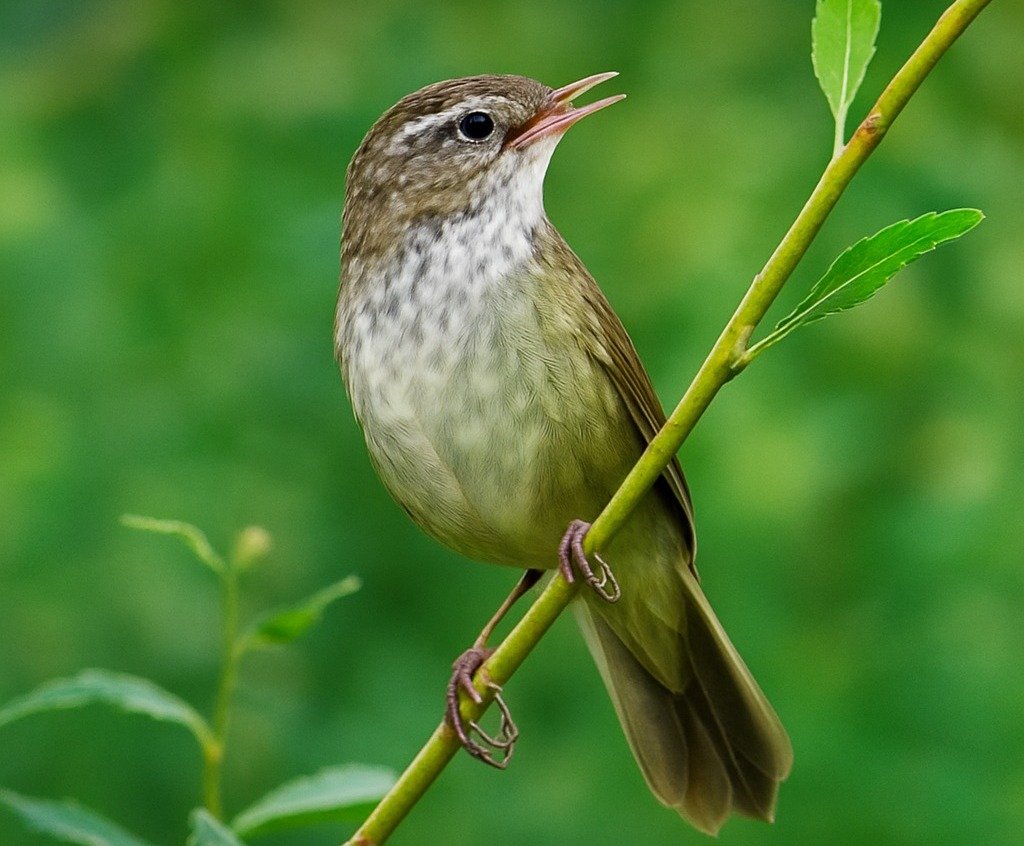
As forests shrink and highlands give way to settlements, the whispers of nature like rare bird calls are being drowned in silence. One such story recently took a turn for the better when a team of Indian birders rediscovered the Long-billed Bush Warbler (Locustella major) in Ladakh after 46 years. This historic sighting has rekindled interest in a larger conservation effort: the mission to find and document India's long-lost birds."
The Long-billed Bush Warbler had not been officially recorded in India since 1979, when it was last observed in Southampton University’s research records. It is a small, shy bird known for its insect-like call and elusive behavior. On July 15, 2025, a group of passionate birders sighted this warbler in Ladakh’s Suru Valley, nestled within dense willow thickets at an altitude of over 3,200 meters. The expedition had started just three days earlier, on July 12. The rediscovery came after the team heard the bird's distinct call and later confirmed its identity through visuals and photographs.
The team included Lt Gen Bhupesh Gosai, Manjula Desai, Rigzin Nubu, Irfan Jeelani, and Harish Thangaraj. Thangaraj, who also recently documented the rare Sind woodpecker in Rajasthan’s Jaisalmer, described the moment as a landmark for Indian ornithology. According to him, the bird's natural habitat in places like the Dras and Suru valleys had been severely altered since the 1920s due to agricultural expansion, which replaced many of the wild bushes with farms.
The bird’s reappearance is more than a rare event. It is a symbol of hope for ongoing conservation missions. The expedition relied on a methodical process that included researching old sightings, examining Google Maps for potential habitats, consulting with fellow birders, and reviewing scientific literature. Their success underscores the value of persistence and local knowledge in tracking down species that have not been seen in decades.
Malaysia-based bird expert James Eaton had achieved a similar breakthrough in 2022 when he found the warbler in Gilgit-Baltistan’s Naltar valley. This area, just across the Line of Control, recorded sightings of the species at altitudes between 3,000 to 3,100 meters. Inspired by Eaton’s findings, the Indian team explored similar altitudes in Ladakh. Their first attempt in the Tulail valley (2,400–2,800 meters) proved unsuccessful, but Suru valley turned out to be the right spot. This region's remoteness and challenging terrain made the rediscovery even more impressive.
The Long-billed Bush Warbler typically appears between mid-June and mid-July. During this time, it sings to claim territory and attract mates. It prefers habitats with short grasses and shrubs, particularly areas with buckwheat, Rumex, and gooseberry bushes (Ribes Geossularia). These specific preferences make the warbler highly vulnerable to habitat changes.
Conservationist and author Bikram Grewal, who wrote Birds of India (2016), noted that the warbler had long been ignored by both birders and wildlife agencies. He believes its rediscovery could spark a wave of interest in locating other long-lost bird species. The International Union for Conservation of Nature (IUCN) currently classifies the Long-billed Bush Warbler as Near Threatened.
Grewal emphasized the potential for more discoveries, especially in underexplored regions like Ladakh. The rediscovery confirms that remote mountain ecosystems still hold secrets, and many rare species may still be surviving silently in patches of untouched wilderness. He added that self-driven missions like this are critical because they fill the gaps left by limited governmental support for deep field research.
While there had been unconfirmed reports of the warbler in 2015 by birder Shashank Dalvi, the lack of photographs meant those sightings were not officially accepted. This time, with photographic proof and detailed field notes, the warbler’s return is beyond doubt. The sighting has now been recognized globally, and more expeditions are being planned in 2023, 2024, and 2025, covering areas as close as 120 kilometers from the Line of Control.
This rediscovery is not just about one bird. It is about reconnecting with nature, preserving biodiversity, and encouraging citizen science. The mission to find long-lost birds in India is becoming a movement, inspiring birdwatchers, scientists, and young students alike. It teaches us that even in the age of satellites and smartphones, some of nature’s best stories unfold only when we venture into the wild with patience, respect, and curiosity.
The Long-billed Bush Warbler’s song, once thought to be silenced in India, has now been heard again. And with it comes a powerful message: every species counts, and ignoring efforts to protect them is a mistake we can no longer afford.




.jpeg)





.jpeg)



.jpeg)



.jpeg)
.jpeg)
.jpeg)
